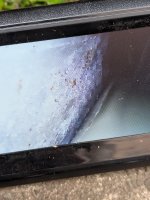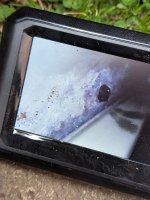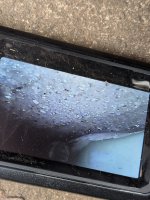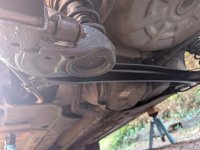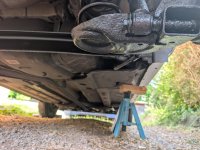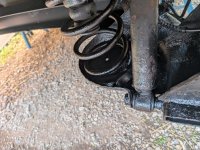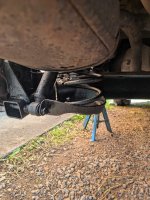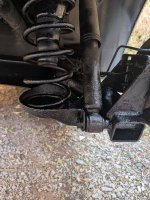Hi all,
Hope you're having fine evenings!
This week after browsing the forum for another issue(rusty rear axle), I became aware of the common issue of rust inside the sills due to jacking on the sill seam. As I've already got her up on stands with the rear wheels off, I took the rubber sill bungs out today, stuck an endoscopic camera in and saw that at least black surface pitting of the galvanised layer(as well as spider poo) is beginning to show up at each of the four jacking points, and with visible red surface rust at the rear. The exterior sill paint is largely intact except for a section on the tip of the seam at the rear, although the seams are indented from poor jacking previously. The inner sills seem okay on the camera. I've gone the whole way along with a rubber mallet, and there's no apparent structural issues.
I'm at a bit of a loss as to what to do here - it's a 2008 1.2 Dynamic Eco with 56000 miles, so not a high value Panda by any means.
Cutting out and replacing the whole outer sill seems nuclear, given the above, and the low impact the rust has had so far.
Is there any point to spraying a decent rust converter/stabiliser(vactan?) through and then some cavity wax, using the drain holes already present, and then stripping the failed exterior paint and re-sealing?
If it only earns another year or so before she's finally done for good.
Would love any advice anyone can give
Thank you
Hope you're having fine evenings!
This week after browsing the forum for another issue(rusty rear axle), I became aware of the common issue of rust inside the sills due to jacking on the sill seam. As I've already got her up on stands with the rear wheels off, I took the rubber sill bungs out today, stuck an endoscopic camera in and saw that at least black surface pitting of the galvanised layer(as well as spider poo) is beginning to show up at each of the four jacking points, and with visible red surface rust at the rear. The exterior sill paint is largely intact except for a section on the tip of the seam at the rear, although the seams are indented from poor jacking previously. The inner sills seem okay on the camera. I've gone the whole way along with a rubber mallet, and there's no apparent structural issues.
I'm at a bit of a loss as to what to do here - it's a 2008 1.2 Dynamic Eco with 56000 miles, so not a high value Panda by any means.
Cutting out and replacing the whole outer sill seems nuclear, given the above, and the low impact the rust has had so far.
Is there any point to spraying a decent rust converter/stabiliser(vactan?) through and then some cavity wax, using the drain holes already present, and then stripping the failed exterior paint and re-sealing?
If it only earns another year or so before she's finally done for good.
Would love any advice anyone can give
Thank you
- Model
- Dynamic Eco 1.2
- Year
- 2008
- Mileage
- 56000
Last edited:


